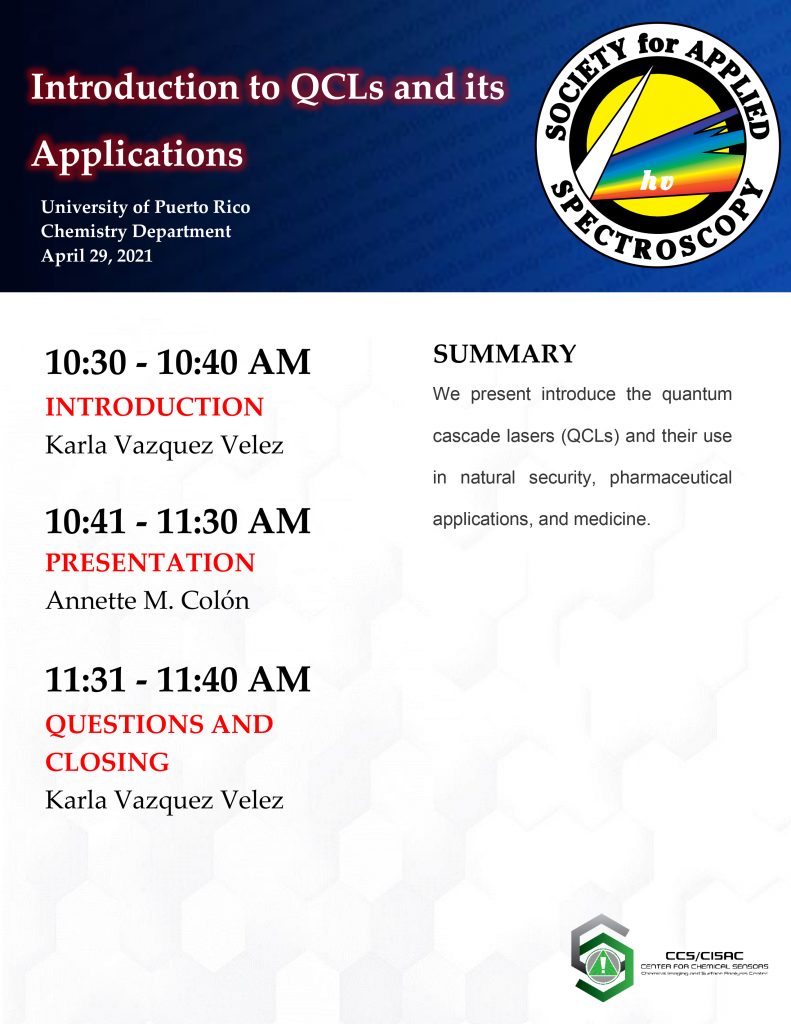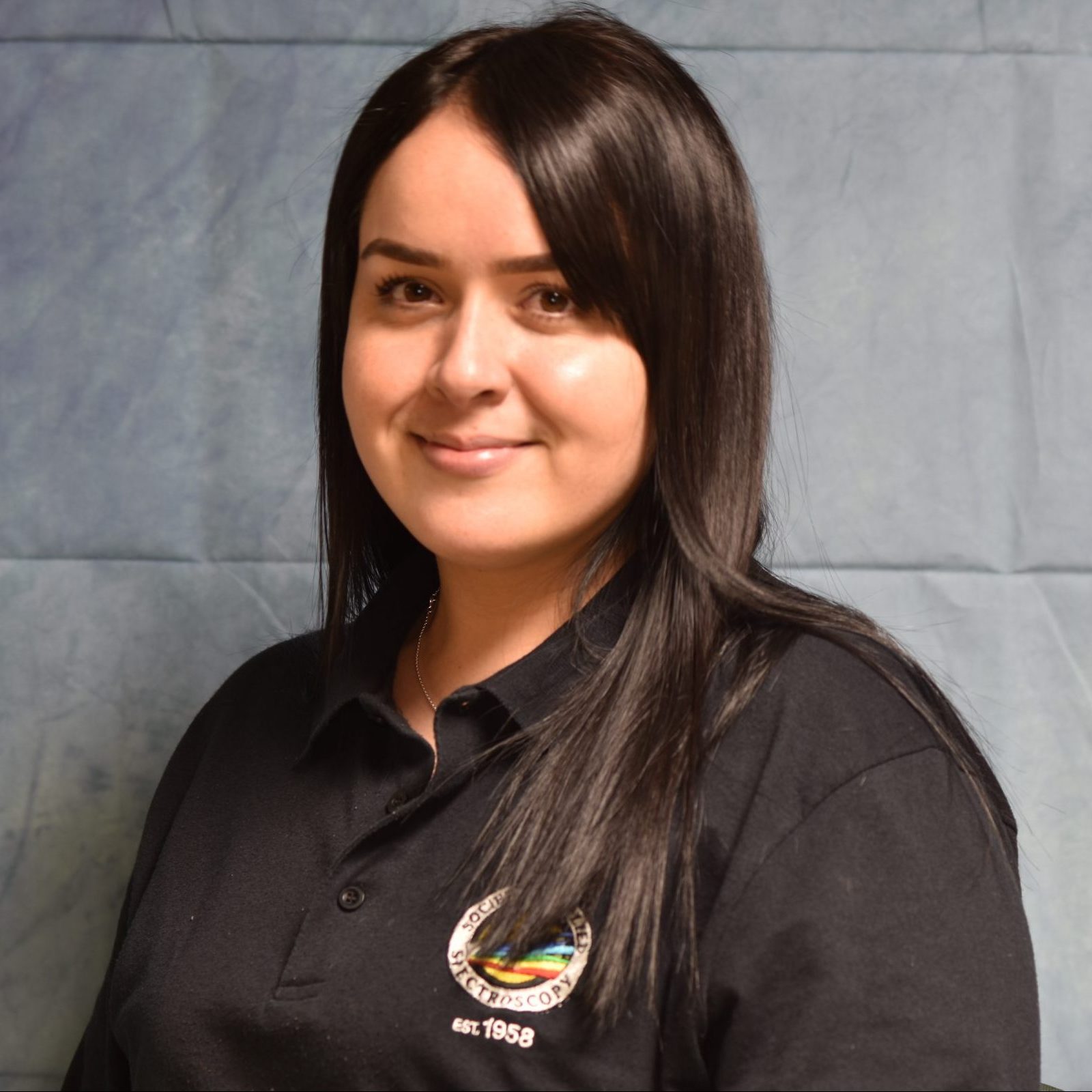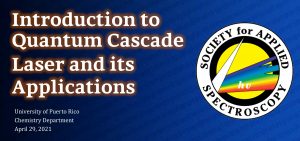
SAS RUM chapter introduced its third webinar on April 29, 2021 teaching undergraduate and graduate students the theory of Quantum Cascade Lasers and its Applications.
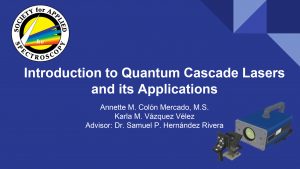
Former SAS president Annette Colon presenting the quantum cascade laser (QCL) presentation.
A Quantum Cascade Laser (QCL) is a type of laser that is used for spectroscopy. A QCL is a semiconductor laser that uses a cascade of quantum well structures to generate light in the mid-infrared to far-infrared region of the electromagnetic spectrum. QCLs have a very narrow linewidth and a high spectral purity, which makes them ideal for spectroscopy applications.
QCLs are commonly used in spectroscopy techniques, such as Fourier Transform Infrared (FTIR) spectroscopy, Raman spectroscopy, and absorption spectroscopy. They are particularly useful for measuring trace gases, biomolecules, and other materials that absorb or scatter light in the mid-infrared to far-infrared region. QCLs are also used for imaging and sensing applications, where their high sensitivity and spatial resolution can provide valuable information about the structure and properties of materials.
Overall, QCLs are an important tool for spectroscopy and other applications, and can provide valuable information about the molecular structure and properties of materials. They are widely used in a variety of fields, including chemistry, biology, medicine, and environmental science.
Flyer
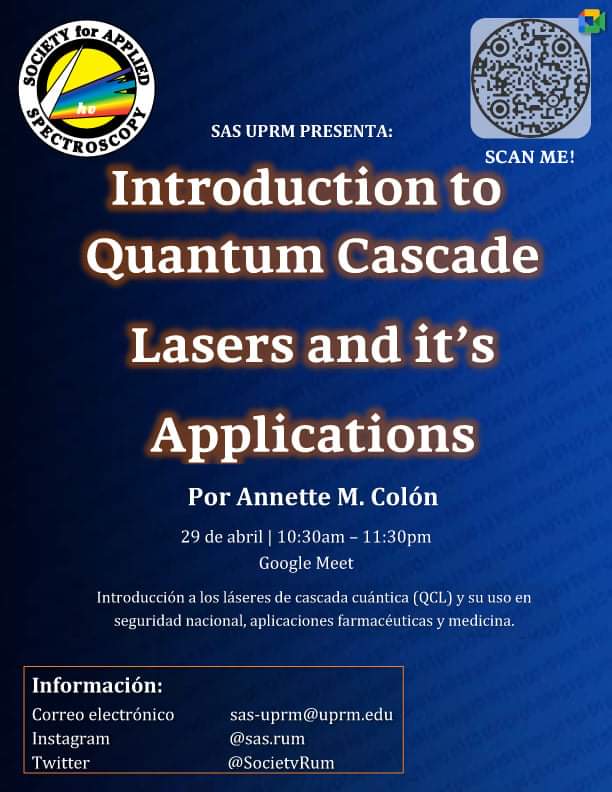
Agenda
